平成28年02月06日 土曜日号
“南天 平成22年”
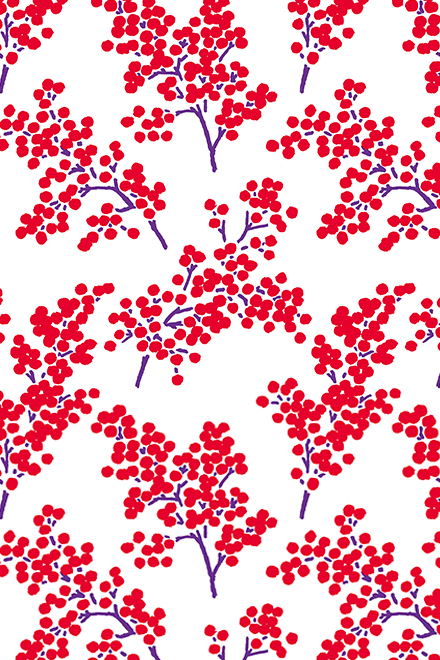
冬の花の少ないときに真赤な丸い実をつけ華やかでかわいい。
雪がつもった中に緑の葉と赤い実が
のぞいている情景は、ほほえましいものだ。
おめでたいものとして正月を祝う植物としても用いられる。
(脇阪 克二)
"Nanten/ Nandina "(2010,by Katsuji Wakisaka)
In stark contrast to the winter snow, Nanten (Nandina) shrubs stand with bright red berries and lustrous green leaves.
Such a heartwarming sight!
As the name Nanten is the same sound with the Japanese word nan-ten, which means to turn misfortune into fortune, it is commonly used for a New Year's decoration by Japanese people.
| English translation by LI XIAO XIAO |
"LE BAMBOU SACRÉ "(2010, par Katsuji Wakisaka)
En cette période rare en fleurs hivernales, le bambou sacré s'habille de séduisants petits fruits rouges et ronds.
Observer le spectacle de ses feuilles verdoyantes et de ses fruits écarlates dans la neige réchauffe les cœurs.
Le bambou sacré est utilisé tant pour les festivités ponctuelles que pour commémorer le jour de l'An.
| Traduction française par Jean-Baptiste Fauvel Matsumoto |
"南天"(2010, 脇阪 克二)
寒冬腊月,万物萧疏,不见花影。
唯有南天竹翠绿扶疏,
并生长出圆润光洁的累累红果。
皑皑白雪中这一抹清雅的绿与红,
宛若跳跃在积雪里欢悦的小精灵。
南天(Nanten)在日语中与“难转”同音,有消灾解厄的吉利寓意,
是日本新年家家户户必备的室内装饰。
| 中译 : 李 瀟瀟 |
→こちらのテキスタイルデザイン商品
(Textile products with this pattern)
平成28年02月03日 水曜日号
“氷梅 平成21年”
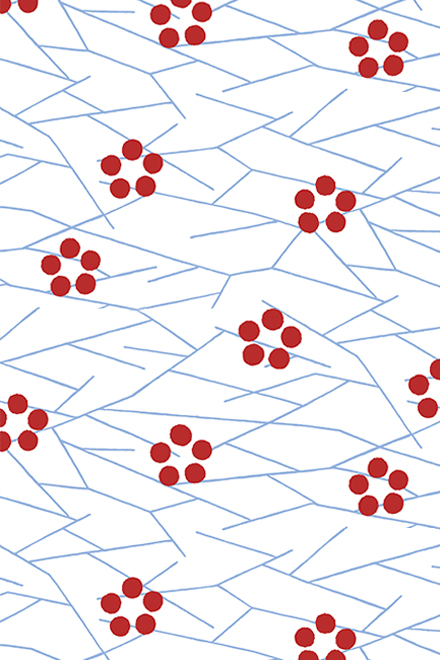
寒い冬のさなかに春が近いことを
感じさせてくれる梅の花。
その梅と氷を表した
氷梅という模様がある。
匂いあふれる梅の花と、
凍りついて亀裂が走った氷という
思いがけない組み合わせを模様にしてしまった。
昔の人はすごいと思う。
(脇阪 克二)
"KŌRI UME / Plum blossoms in ice"(2009,by Katsuji Wakisaka)
In the midst of winter,
plum trees bloom onto the barren landscape,
reminding people spring is coming.
This textile design is composed of fragrant plum blooms
and cracked ice.
What an exquisite combination!
The ancient aesthetic senses are beyond praise.
| English translation by LI XIAO XIAO |
"KŌRI UME / Prune glacée"(2009, par Katsuji Wakisaka)
En cette période rare en fleurs hivernales, le bambou sacré s'habille de séduisants petits fruits rouges et ronds.
Observer le spectacle de ses feuilles verdoyantes et de ses fruits écarlates dans la neige réchauffe les cœurs.
Le bambou sacré est utilisé tant pour les festivités ponctuelles que pour commémorer le jour de l'An.
| Traduction française par Jean-Baptiste Fauvel Matsumoto |
"冰梅"(2009, 脇阪 克二)
梅花在冬天最寒冷的時節
讓人感受到即將來臨的春天
在日本,有一種傳統紋樣
由冰和梅花構成的圖案
暗香疏影的梅花和冰裂紋組合
讓人不由嘆服於古人的創作氣韻
| 中譯 : 李 瀟瀟 |
→こちらのテキスタイルデザイン商品
(Textile products with this pattern)
平成28年01月29日 金曜日号
“節分 平成22年”
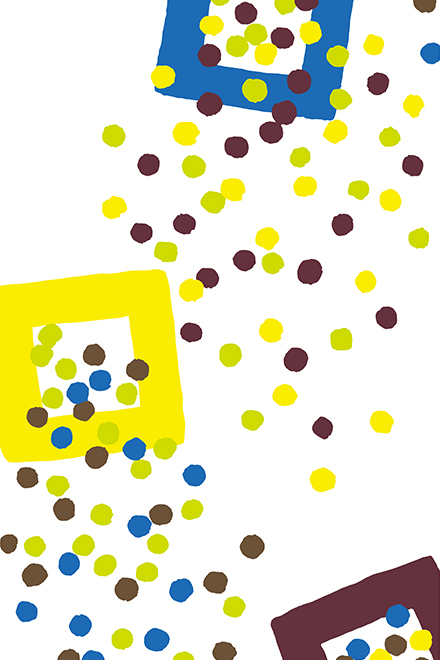
節分には「鬼は外、福は内」という掛け声とともに、
枡に入れた豆をまく。
鬼に豆をぶつけることで邪気を払い、一年の無病息災を願う。
一年で一番寒いこの時期に声を張り上げて豆をまくと、
縮こまっていた体も伸びて、
心も体も元気が出てくる気がする。
(脇阪 克二)
"Setsubun"(2010,by Katsuji Wakisaka)
Setsubun is the day that celebrates the beginning of spring in Japan, marked by a special event called mamemaki or bean scattering.
Roasted soybeans, called "fortune beans" (fukumame), are thrown while saying "Demons out! Luck in!" (Oni wa soto! Fuku wa uchi!). This special ritual is thought to cleanse away all the evil of the former year, and bring good fortune for the year to come.
You will feel revitalized mentally and physically
by throwing roasted soybeans while chanting during the coldest period in the year.
| English translation by LI XIAO XIAO |
"Setsubun / Début du printemps "(2010, par Katsuji Wakisaka)
Il est de tradition lors de la fête du Setsubun de lancer des graines de soja grillées contenues dans une boite carrée en bois, tout en clamant "Dehors les démons! Dedans le bonheur!" (Oni wa soto! Fuku wa uchi!). Ce rituel se nomme mamemaki, “lancée des haricots”, et marque le début du printemps.
Frapper de plein fouet les démons à l'aide de ces graines appelées “haricots du bonheur” (fukumame) permet de faire fuir les forces néfastes de l'année passée et de solliciter la bonne fortune tout au long de l'année à venir.
Lorsqu'on les lance avec vigueur, tout en s'époumonant en cette période la plus froide de l'année, nos corps engourdis s'éveillent enfin et une sensation de vitalité nous envahit alors corps et âme.
| Traduction française par Jean-Baptiste Fauvel Matsumoto |
"節分"(2010, 脇阪 克二)
節分,在日本特指立春的前一天,有撒豆驅鬼的習俗。
人們一邊喊著「福は内、鬼は外」(福進來鬼出去),
一邊抛撒福豆(翻炒後的大豆),驅邪迎福。
在這一年中最寒冷的時節,人們熱火朝天地一邊呼喊一邊撒豆,
也算得上是一項舒展身心的大衆傳統體育運動了。
| 中譯: 李 瀟瀟 |
→こちらのテキスタイルデザイン商品
(Textile products with this pattern)
平成28年01月25日 月曜日号
“花札 平成27年”

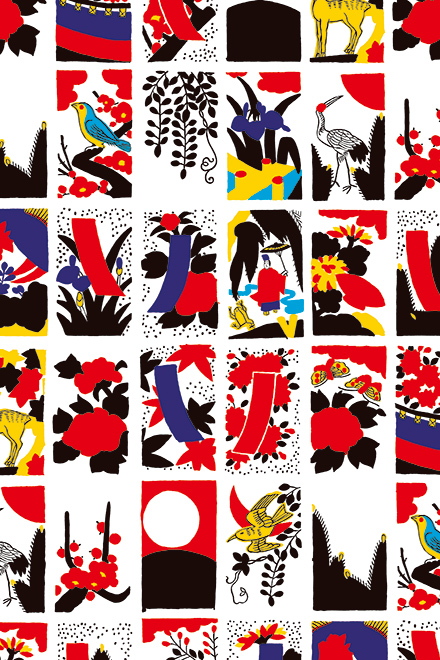
日本のかるたの一種。
西洋のトランプなどと違って
12ヶ月の四季折々の花や木が
色鮮やかに描かれている。
松、梅、桜、藤、菖蒲、牡丹
萩、芒、菊、紅葉、柳、桐。
それに猪、鹿、蝶、鶴、雁、鶯
郭公、燕、鳳凰
などの鳥や動物など生きものが
配され色濃い日本情緒を
かもし出している。
(脇阪 克二)
"Hanafuda"(2015,by Katsuji Wakisaka)
Hanafuda, or flower-cards, is a Japanese traditional card games.
Unlike western playing-cards, each card is designed with a seasonal flower or plant associated with a month of the year. Pine, plum, sakura, wisteria, iris, peony,
clover, grass, chrysanthemum, maple, willow and paulownia.
Some animals and birds are also represented on cards, such as a
boar, a deer, a butterfly, a crane, a geese, a nightingale, a cuckoo, a swallow or a Phoenix.
Colorful representations depicting the essence and beauty of Japanese culture.
| English translation by LI XIAO XIAO |
"Hanafuda"(2015,par Katsuji Wakisaka)
Hanafuda, ou "Jeu des Fleurs", est un jeu de cartes traditionnel japonais.
Différent des jeux de cartes occidentaux, chaque carte met en scène une plante ou une fleur saisonnière, associée à chaque mois de l'année. On y retrouve le pin, l'abricotier, la fleur de cerisier, la glycine, l'iris, le pivoine, le lespédèze, le miscanthus sinensis, le chrysanthème, l'érable, le saule et le paulownia.
Certains animaux et oiseaux sont également représentés avec les cartes sanglier, cerf, papillon, grue, oie, rossignol, coucou, hirondelle et phœnix.
Un bouquet vivant à l'image de la beauté japonaise.
"傳統紙牌"(2015,by 脇阪 克二)
花札也稱花牌,是一種日本傳統的紙牌游戲。
與西洋撲克牌不同,
花札的牌面畫著十二個月的代表性花卉植物。
植物從一月至十二月分別是:
松、梅、櫻、紫藤、菖蒲、牡丹、
胡枝子、芒草、菊、楓、柳、桐
有的植物圖案中還配有相應的動物:
野豬、鹿、蝴蝶、鶴、雁、鶯、鵑、燕、鳳凰。
這些勾繪在牌面上的四季風物,
將和風韻味演繹得淋漓盡致。
| 中譯 : 李 瀟瀟 |
→こちらのテキスタイルデザイン商品
(Textile products with this pattern)
- 最近書いた記事
- 関連記事
平成28年01月22日 金曜日号
“SO-SU-U 平成7年”
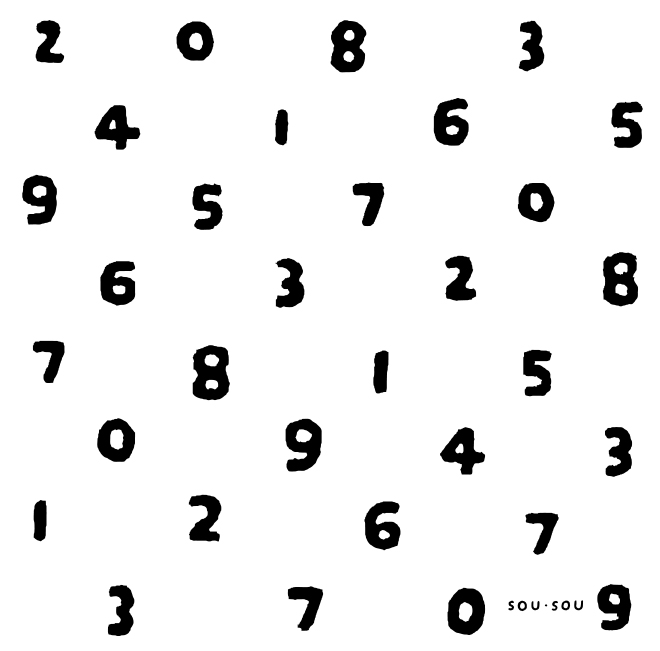
世界中で広く使われているアラビア数字は
シンプルで国籍、性別、年令などを問わない
普遍性を備えています。
記号としてよく出来ていて、
しかも愛着のもてる形をしています。
デザインする時むつかしいかなと思ったのは、
どこにでもある形なのでどこまで魅力的に
出来るかということでした。
(脇阪 克二)
"SO-SU-U"(1995,by Katsuji Wakisaka)
Arabic numerals that are used worldwide are very simple, and transcend nationality, gender and age.
They are very well designed symbols and are even cute as shapes.
The challenge I experienced with this textile was since these are symbols you see everywhere, how I could transform them into an attractive form.
| English translation by LI XIAO XIAO |
"SO-SU-U"(1995, par Katsuji Wakisaka)
Les chiffres arabes qui sont utilisés à travers le monde sont très simples, et transcendent la nationalité, le sexe et l’âge.
Ce sont des symboles très bien conçus et leurs formes sont même mignonnes.
Le défi auquel j’ai été confronté avec ce textile était de savoir comment transformer ces symboles que l’on voit partout en des formes attrayantes.
"SO-SU-U 十數" (1995, 脇阪 克二)
全世界廣泛使用的數字
不分國籍、性別、年齡
簡單又具有普遍性
除了作爲方便使用的計數符號
形狀輪廓也十分具有親和力
我在設計這款紋樣時遇到的難題是
如何表達出隨處可見的數字之獨特魅力
| 中譯 : 李 瀟瀟 |
→こちらのテキスタイルデザイン商品
(Textile products with this pattern)
平成27年12月24日 木曜日号
“風神雷神 平成27年”

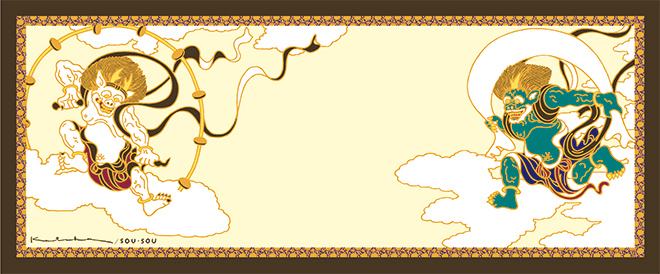
風神雷神は古くから仏教美術において見られ
1世紀から3世紀に栄えたクシャーナ王朝の
コインに風神が描かれており
敦煌石窟の壁画や
三十三間堂の本像などもある。
しかしなんと言っても俵屋宗達の
屏風絵の風神雷神だろう。
宗達は僕が最も尊敬する
絵師であり、日本の宝だ。
(脇阪 克二)
Wind God and Thunder God (2015, by Katsuji Wakisaka)
Wind god and Thunder god were found long ago in Buddist art.
Wind god are depicted on coins of the Kushan dynasty,
which flourished from the 1st to the 3rd century,
as well as the wall paintings in the Dunhuang Grottoes
and statues in Sanjusangen-do.
However, the best known of all is the
Wind God and Thunder God in the screen paintings by Tawaraya Sōtatsu.
Sōtatsu is the painter I respect the most
and is a treasure of Japan.
| English translation by Karen Yiu |
Fūjin et Raijin (2015 par Katsuji Wakisaka)
Le dieu du vent (Fūjin) et celui de la foudre (Raijin) font partie
de l’art bouddhique depuis les temps anciens.
Fūjin était frappé sur les pièces de monnaie durant la dynastie Kouchan
entre le premier et le troisième siècle de notre ère.
Le duo était représenté sur des peintures murales dans les grottes de Mogao,
Ou bien en statues principales dans le temple Sanjūsangen-dō.
Également sur des paravents, dans l’oeuvre attribuée au peintre Tawaraya Sōtatsu
C’est lui que je respecte le plus.
Plus qu’un artiste, c’est un trésor national.
| Traduction française par JB&B |
風神雷神 (2015, 脇阪 克二)
自古以來 風神雷神在佛教藝術中早有所見
於1世紀到3世紀興盛繁榮的貴霜帝國
其錢幣雕刻中也有出現
敦煌石窟壁畫和
三十三間堂內更有神像本尊
即使如此 最著名的莫過於
俵屋宗達繪製的風神雷神圖屏風
宗達是我最尊敬的畫師
也是日本的寶物
| 中譯 : 莊 幃婷 |
→こちらのテキスタイルデザイン商品
(Textile products with this pattern)
平成27年12月06日 日曜日号
“根菜 平成25年”

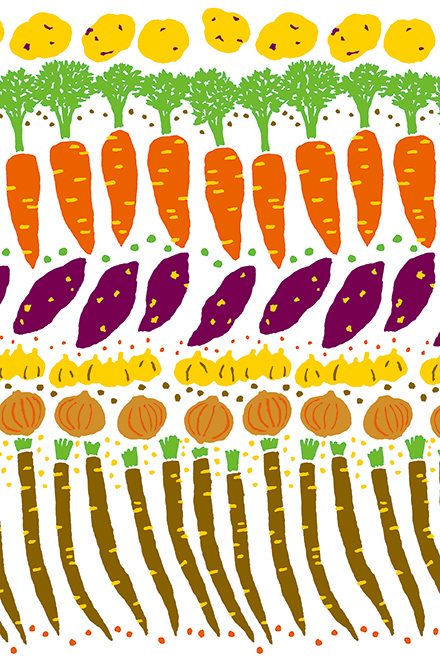
土の中で育つ野菜にもいろんなものがある。
オレンジ色のにんじん
土色のじゃがいも ごぼう
赤紫のさつまいも
白いにんにく 大根 などなど。
形も細長いものから
真丸いものまで多種多様。
共通しているのは
根っこだから重いことだろうか。
これで一年間の野菜シリーズも終り。
始める前は苦労するのではないかと思っていたが
意外と楽しく作ることができた。
(脇阪 克二)
Root Vegetables (2013, by Katsuji Wakisaka)
There are many different vegetables that grow in the soil.
Orange carrots,
earth-colored potatoes and burdocks,
sweet potatoes in reddish purple,
garlic and radishes in white color, and so on.
There is also a wide variety of shapes,
from long, slender to ball-shaped.
What they all have in common is that
they are heavy because they are planted by the roots.
This comes to the end of the year-long vegetable series.
Before I started, I thought it would be hard work,
but it was surprisingly enjoyable.
| English translation by Karen Yiu |
Légume-racine (2013 par Katsuji Wakisaka)
Il existe de nombreuses variétés de légumes qui poussent dans le sol.
La carotte orange,
la pomme de terre couleur du sol, la bardane,
la patate douce violette
l’ail, le radis blanc, et j’en passe.
De forme allongée
ou bien rond, il y en a de toutes sortes.
Leur similitude ne serait-elle pas le poids, dû aux racines?
C’est la fin de la série des légumes de l’année.
Avant de commencer, j’ai cru que j’aurais eu des difficultés
mais, étonnamment, c’était très amusant à réaliser.
| Traduction francaise par JB&B |
根莖類 (2013, 脇阪 克二)
在土壤中孕育的蔬菜有很多種
橘色的紅蘿蔔
土色的馬鈴薯、牛蒡
紫紅色的地瓜
白色的蒜頭、白蘿蔔等
從細長到圓形 形狀各式各樣
共通點都是根部所以很有份量
到此 為期一年的蔬菜系列結束
開始前我以為這會是一件辛苦的工作
但種植過程卻出乎意料地令人愉快
| 中譯 : 莊 幃婷 |
→こちらのテキスタイルデザイン商品
(Textile products with this pattern)
平成27年01月31日 土曜日号
“東欧 平成7年”

東ヨーロッパの民族衣装。
白いブラウスとスカートに
色鮮かな草花の刺繍が
ほどこされている。
厳しい暮らしの中
日々のささやかなしあわせを願って
一針一針さしていったものだろう。
人々の素朴な気持が伝わってくる。
(脇阪 克二)
平成27年01月15日 木曜日号
“結 平成20年”
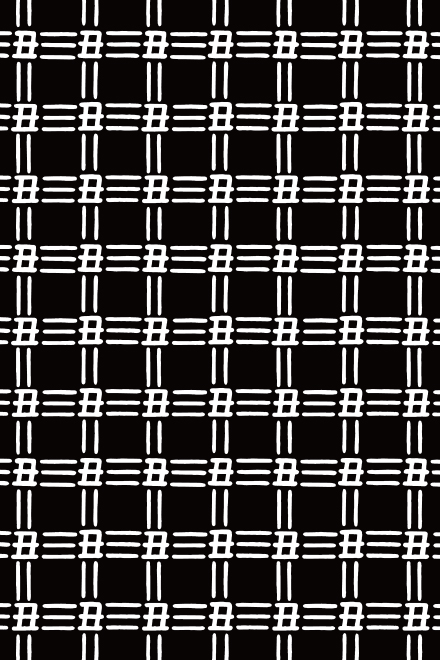
今年の干支“丑”は、物の結び目を表すようです。
いろんな意味で大変な時代。
だからこそ人と人との関係が問われていると思います。
いい人間関係が結ばれていれば、
どんなことが起こっても幸せではないでしょうか。
“結”は丑の字を中心に
格子模様でしっかりと結んでみました。
(脇阪 克二)
Year of the Ox (2008, by Katsuji Wakisaka)
The zodiac sign of this year "丑(Ox)" appears to be an expression of knots.
It is a difficult time in many senses.
That's why interpersonal relationship is being questioned.
If we can develop a good human relationship,
there will be happiness no matter what has happened, won't there?
The "Year of the Ox" pattern is centred around the word "丑(Ox)"
which is tightly tied into a lattice pattern.
| English translation by Lala Fu |
Noeuds (2008 par Katsuji Wakisaka)
Le signe du zodiaque chinois de cette année, le bœuf,
semble représenter le “nœud” des événements.
Nous vivons une période difficile à bien des égards.
C'est pourquoi le lien entre les personnes sont remises en question.
Si nous établissons de bonnes relations humaines,
les gens seront heureux quoi qu'il arrive.
Le symbole "Yui" est centré sur le personnage du bœuf.
Je l'ai placé au centre d'un motif en damiers.
| Traduction francaise par JB&B |
結 (2008, 脇阪 克二)
今年的生肖「牛(丑)」似乎代表繩子打結之處。
從很多方面來說,這是個艱難的時代,
因而對人與人之間的關係產生了質疑。
然而我相信,如果能建立良好的人際關係,
無論發生什麼,人們都還是會感到幸福。
「結」,是以丑字為中心,創作出緊密連結的格子圖案。
| 中譯 : 莊 幃婷 |
平成26年11月25日 火曜日号
“つながり 平成26年”

ひとりの人のある部分ともうひとりの人の
ある部分がかさなりあう。
それが又別の人のある部分と
かさなりあって人と人とが
つながっていく。
それが人が生きていく力になっていく。
人はひとりでは生きられない。
(脇阪 克二)
平成26年10月26日 日曜日号
“縞々 平成26年”
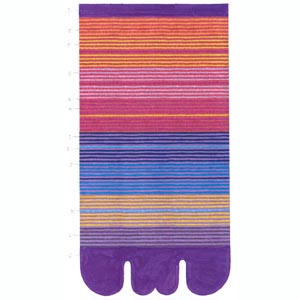
縞模様はたくさん作ってきたが
このように多色使いのものは
はじめてかもしれない。
足袋下で上から下まで色が
変化していったら面白いだろうなあと
思ったのでこういう縞を作った。
出来上がってみると
こういう色数の多い縞が
生地や衣服にあってもいいなと思う。
アイデアというのは意外と
こういうところから生まれることが多い。
(脇阪 克二)
平成26年07月25日 金曜日号
“朝の花 平成26年”

朝のさわやかな空気の中で開く花。
精一杯咲いて
夕方にはしぼんでしまう。
次の朝、別のつぼみが花開く。
ひとつひとつの花の命は短かいけれど
夏の間楽しませてくれる。
そして来年も又。
(脇阪 克二)
平成26年06月25日 水曜日号
平成26年05月25日 日曜日号
“雨の精 平成25年”
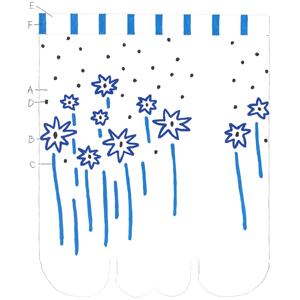
明かるい空から雨粒が落ちてくる。
光があふれた日なのに雨が降っている。
きらきら輝く雨粒が
花のように見えたり
星のように見えたりする。
雨の精が降りてきているのだろうか。
(脇阪 克二)
平成26年04月25日 金曜日号
平成26年03月29日 土曜日号
“くるりん 平成5年”
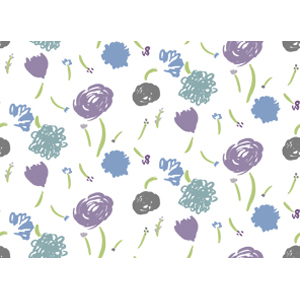
筆でいきおいよくくるくると描く。
かしゃかしゃかしゃと花を描く。
ちょんちょんと筆をおいて
つぼみに見えるかなあ。
軽快に茎を描いていく。
花が舞い、つぼみは回り
くるくるくるりんと踊りはじめる。
(脇阪 克二)
平成26年03月25日 火曜日号
“小菊 平成17年”
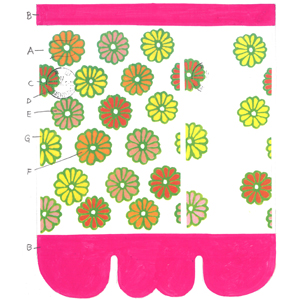
小さい花が並んでいる模様は
とてもかわいいものだが
今まではあまりつくっていない。
色とりどりの小さい菊を
ふつうに並べてみた。
テキスタイルデザインはこういう
何でもない模様が多く
人に好まれるものだが……。
(脇阪 克二)
平成26年02月08日 土曜日号
“下描き 平成8年”
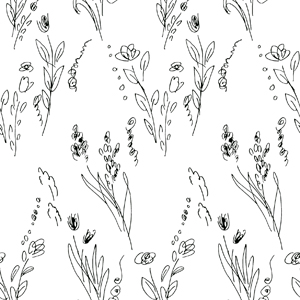
テキスタイルデザインをつくる時
あまり下書きはしない。
でも時々ラフな絵を描いて
その上に筆で描くことがある。
下書きは楽な気持で描くので
素顔の自分が出るかもしれない。
(脇阪 克二)
平成26年01月25日 土曜日号
“気球散歩 平成17年”
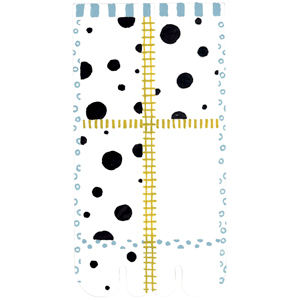
まあるい気球に乗って
大空の散歩に行こう。
森をこえ山をこえ
川に沿って進んでいく。
野原に出ると
緑の中に放牧されている
人や牛の姿が小さく見える。
楽しいし、とても気持がいいだろうなあ。
(脇阪 克二)
平成25年09月21日 土曜日号
“畳 昭和55年”
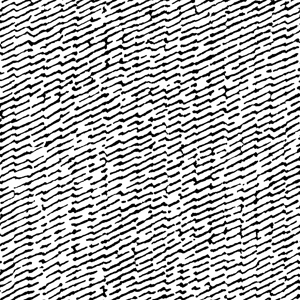
畳の機能性と美しさには
素晴らしいものがある。
あの足触りの気持よさ
坐っても寝ころんでも適度の
やわらかさと固さがある。
藺草(いぐさ)という植物から
作られていて湿度の高い
日本の気候に順応し
夏は涼しく冬は暖かい。
新しい畳のにおいはすがすがしく
気持がひきしまる。
僕は畳の表面の細かい模様も好きなので
そのイメージでつくりました。


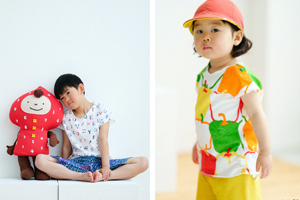

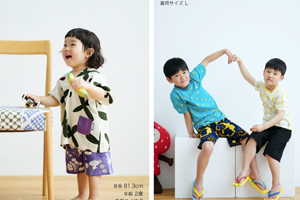
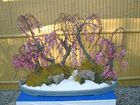
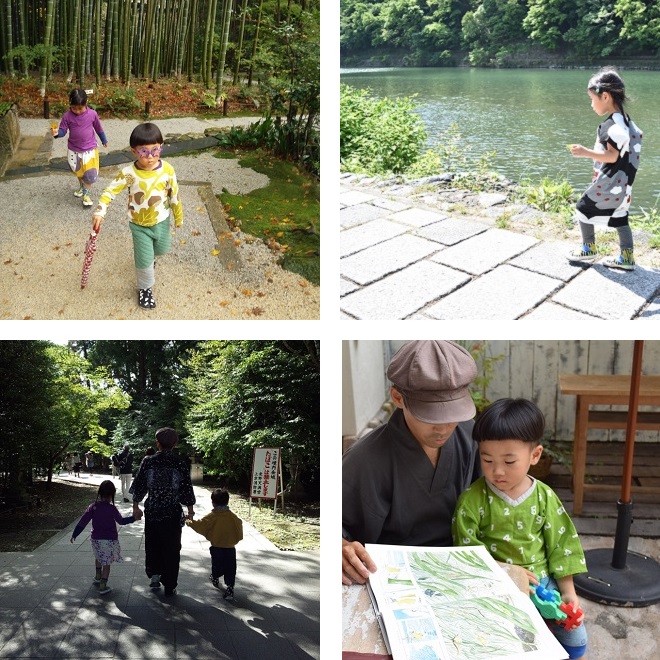
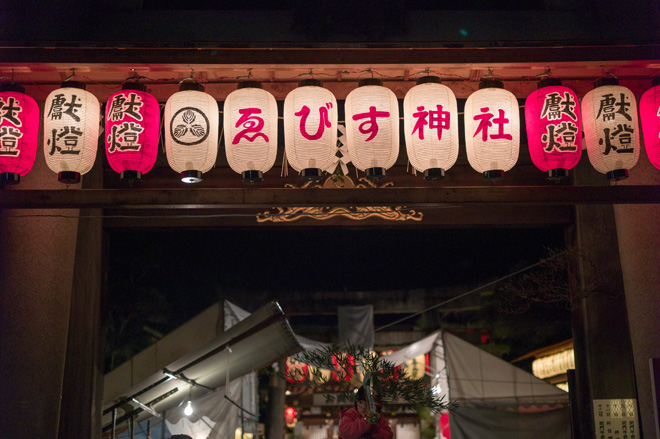
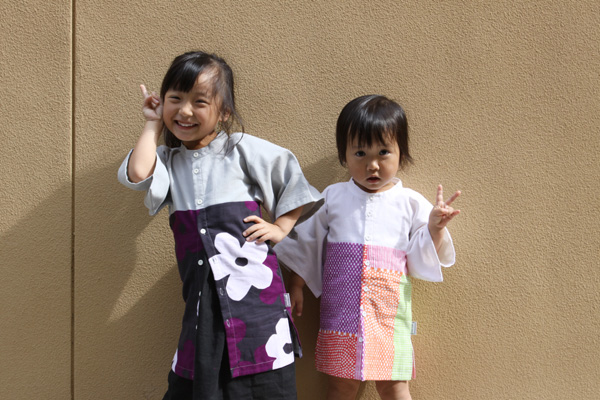
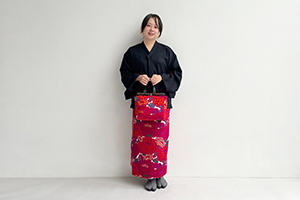
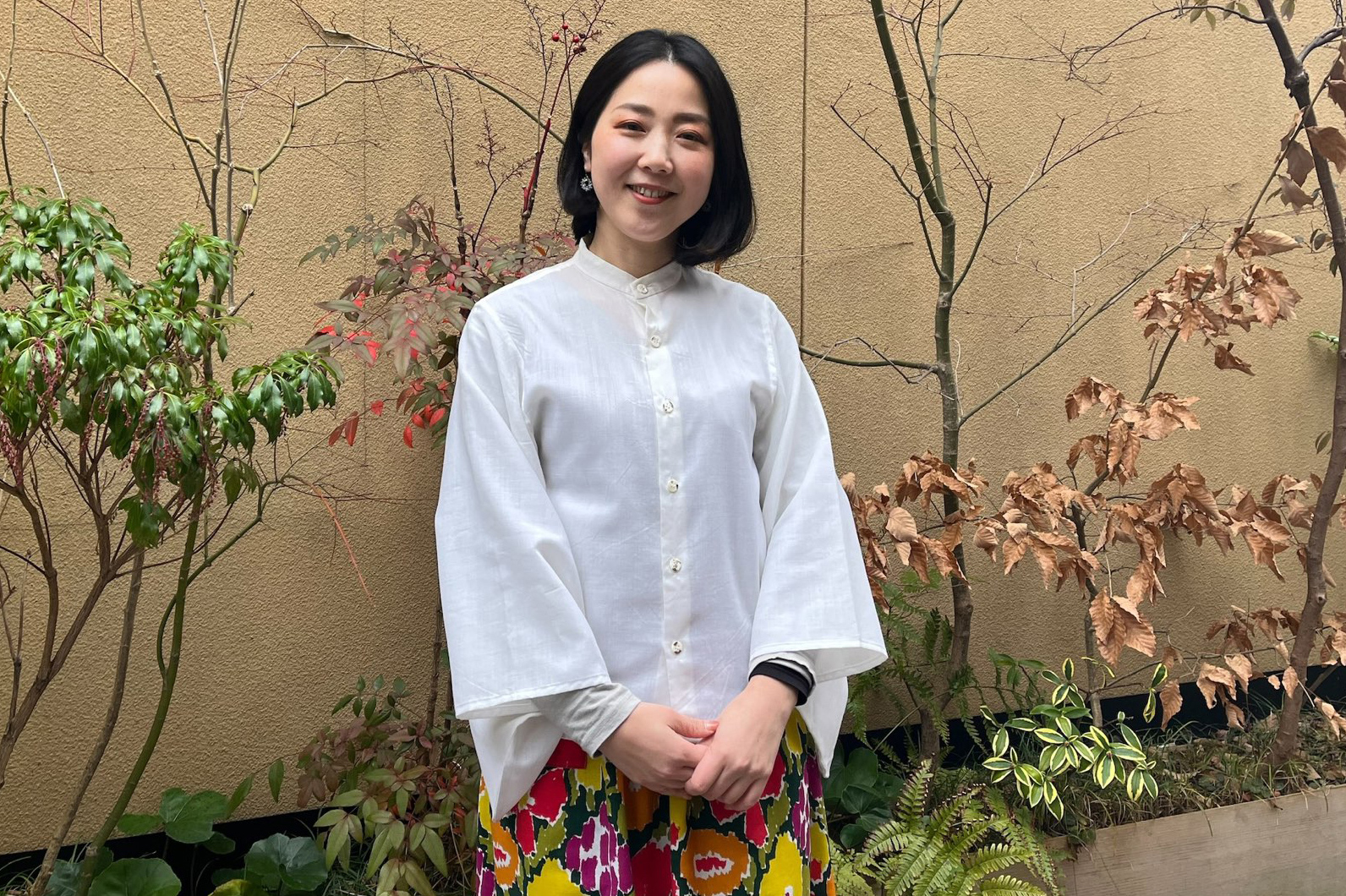
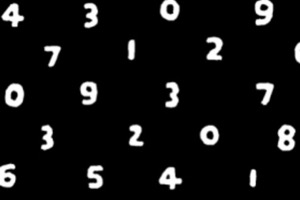
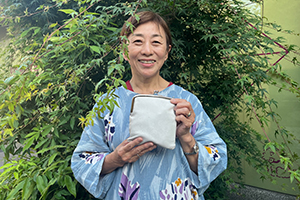
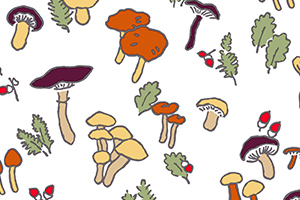
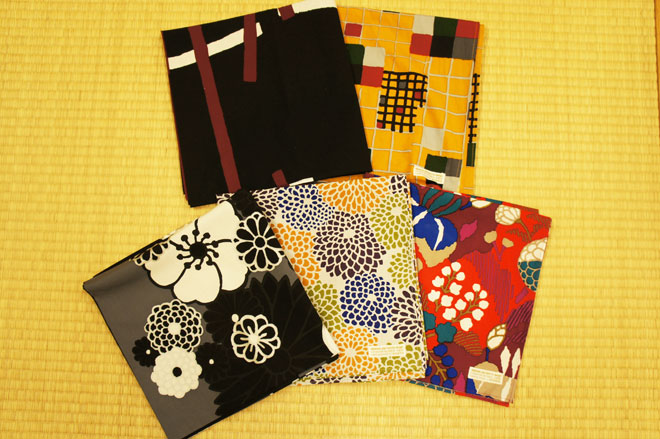
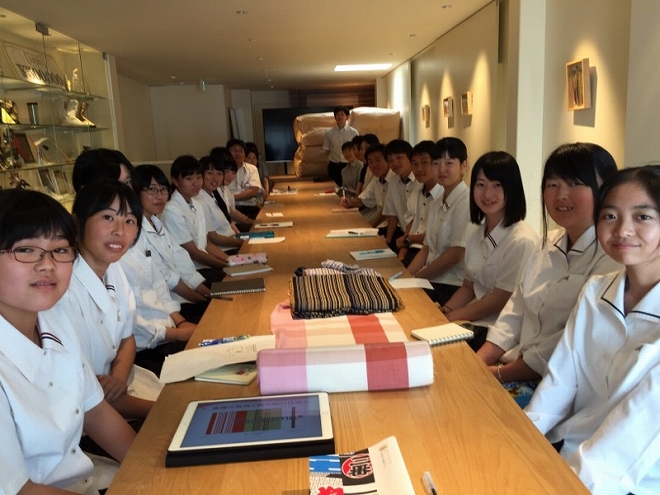
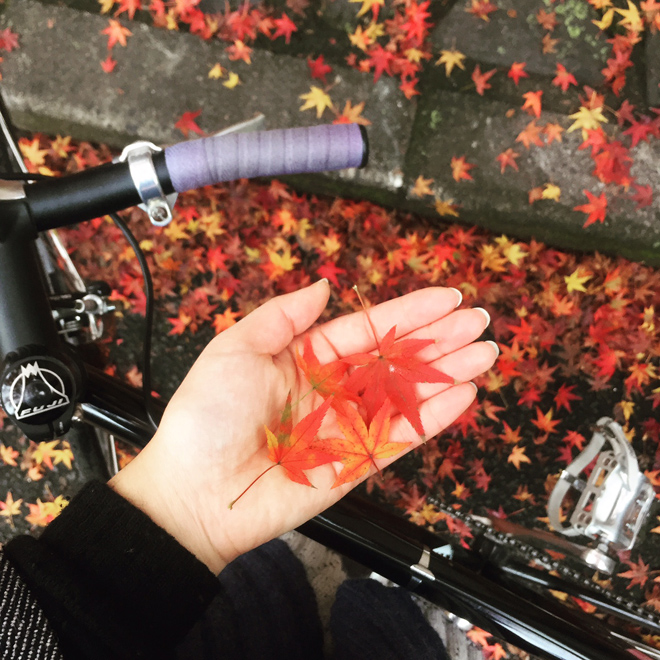
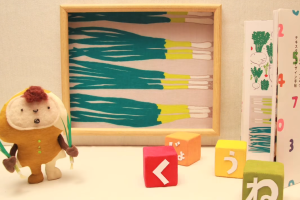
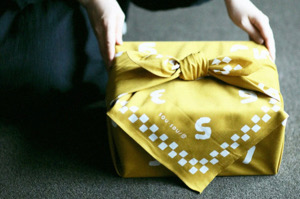

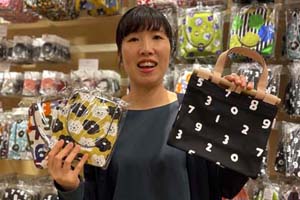

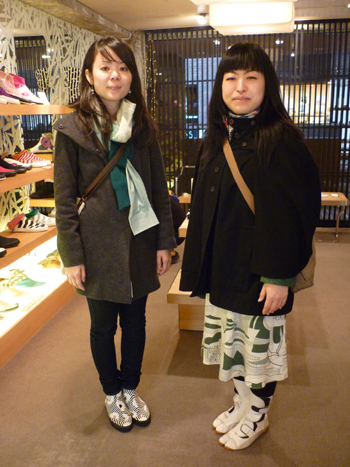
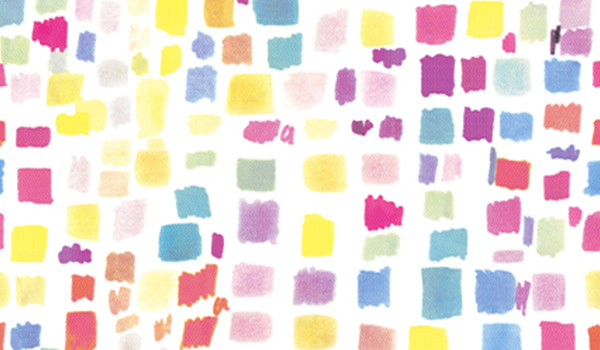
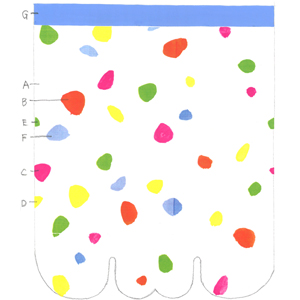
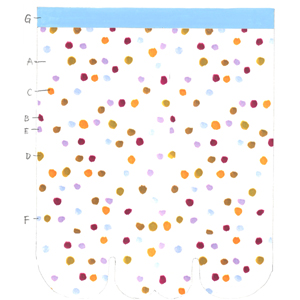
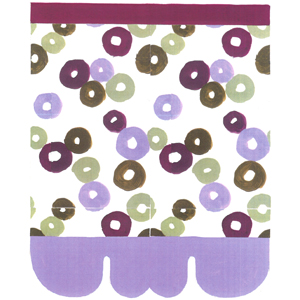

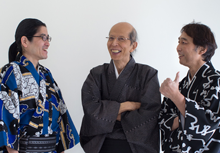

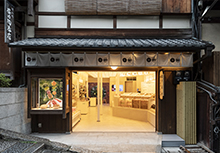

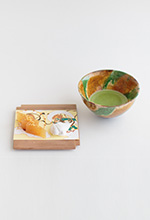
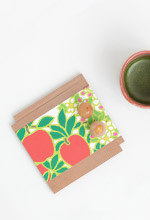










 お問い合わせ窓口
お問い合わせ窓口










